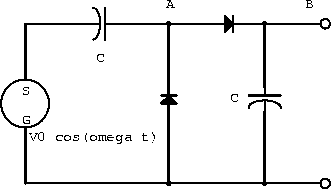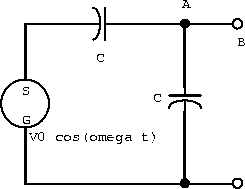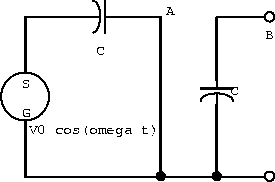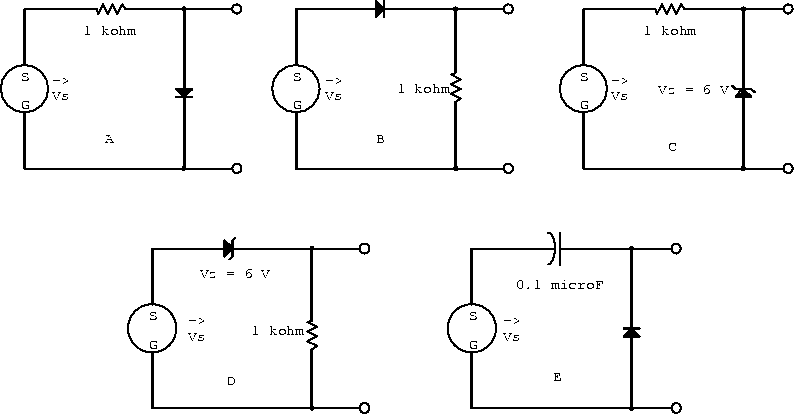
Figure 4.14: Circuits with a single ideal diode.
The forward and reverse biased approximations for the circuit in figure 4.14a are shown in figure 4.15 and the output voltage is sketched in figure 4.20a.
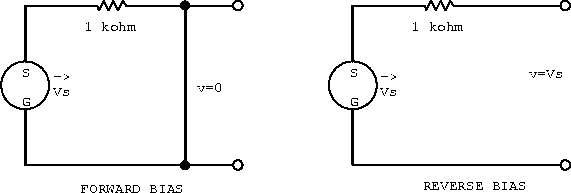
Figure 4.15: Single diode circuit a).
The forward and reverse biased approximations for the circuit in figure 4.14b are shown in figure 4.16 and the output voltage is sketched in figure 4.20b.
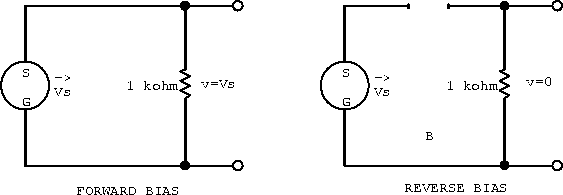
Figure 4.16: Single diode circuit b).
The forward and reverse biased approximations for the circuit in figure 4.14c are shown in figure 4.17 and the output voltage is sketched in figure 4.20c.
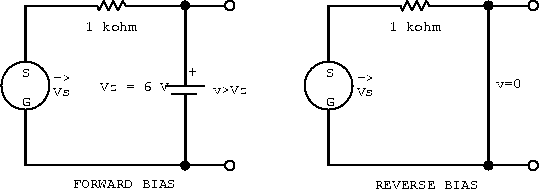
Figure 4.17: Single diode circuit c).
The forward and reverse biased approximations for the circuit in figure 4.14d are shown in figure 4.18 and the output voltage is sketched in figure 4.20d.
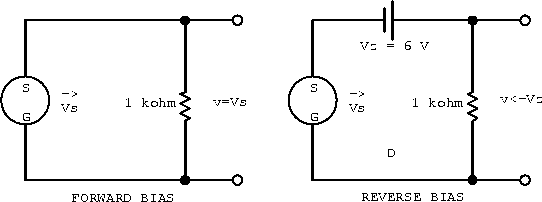
Figure 4.18: Single diode circuit d).
The forward and reverse biased approximations for the circuit in figure 4.14e are shown in figure 4.20 and the output voltage is sketched in figure 4.20e.
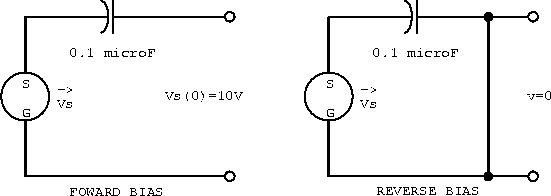
Figure 4.19: Single diode circuit e).
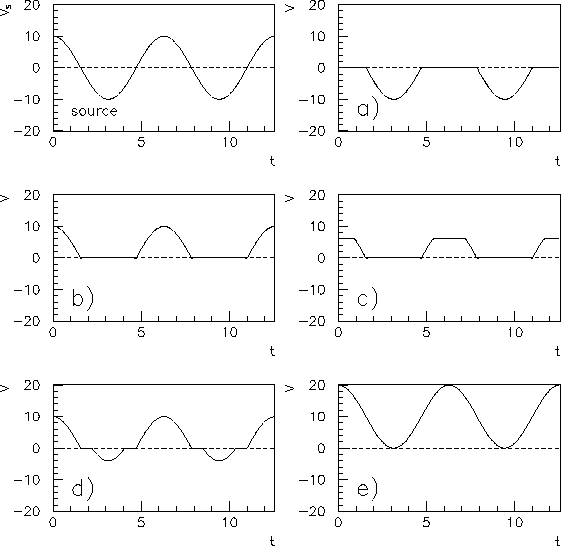
Figure 4.20: Sketch of the output voltage as a
function of time.
